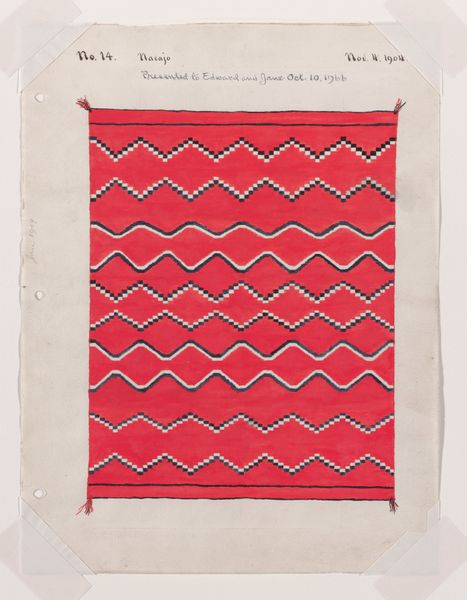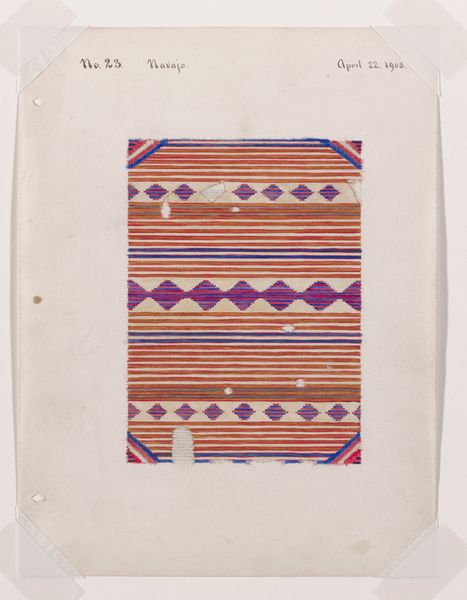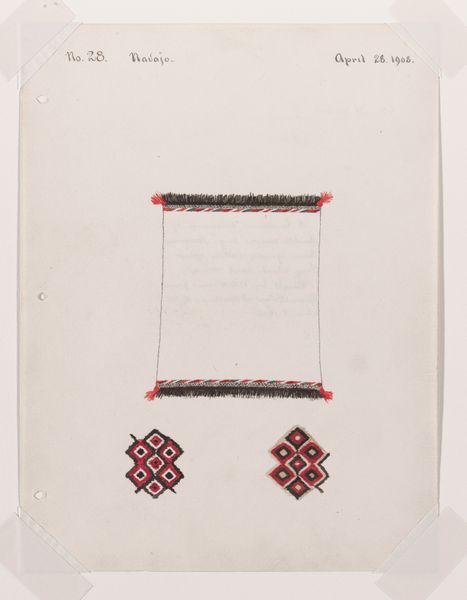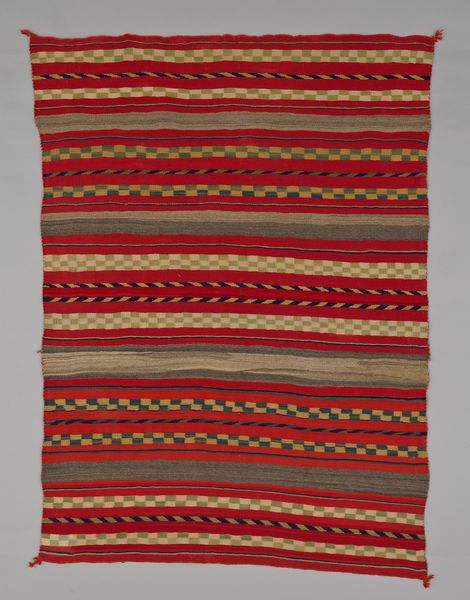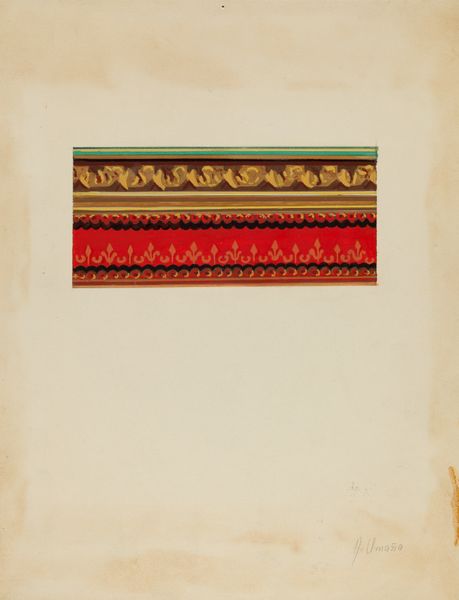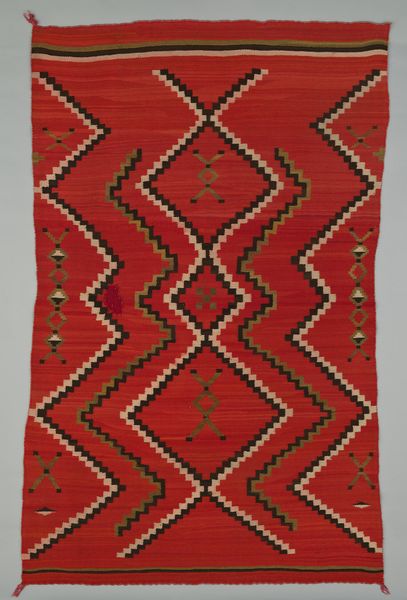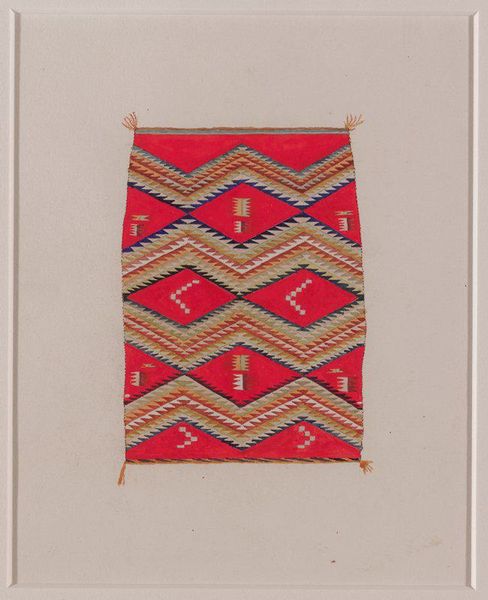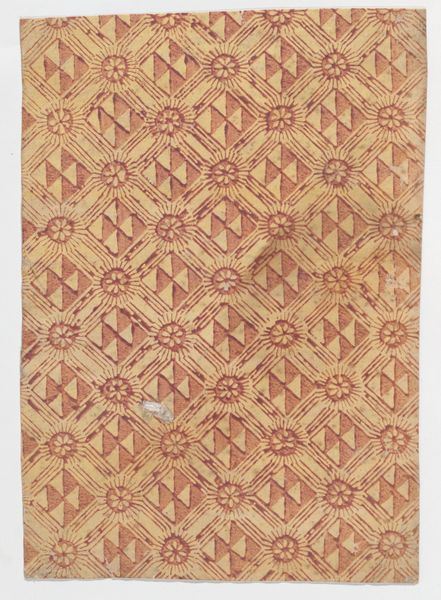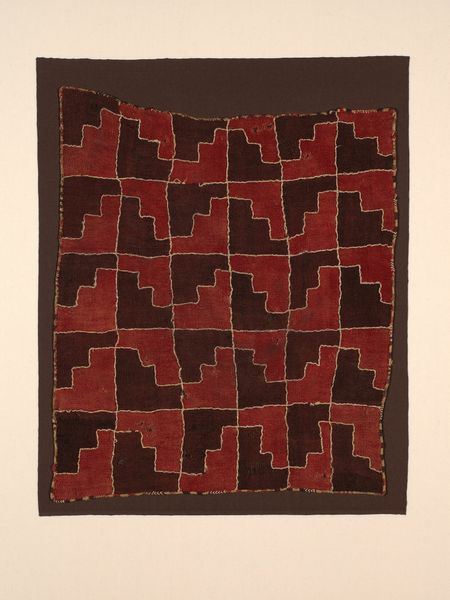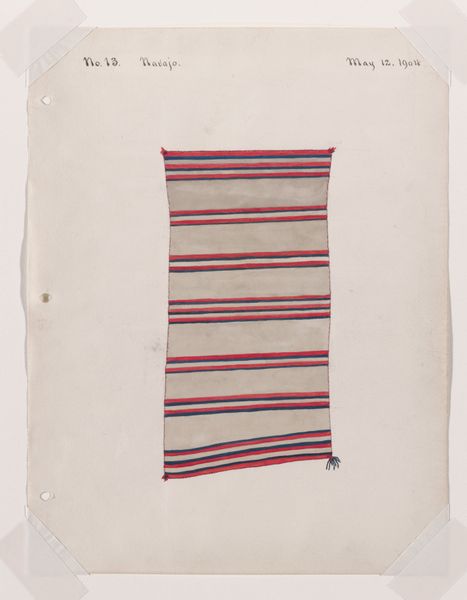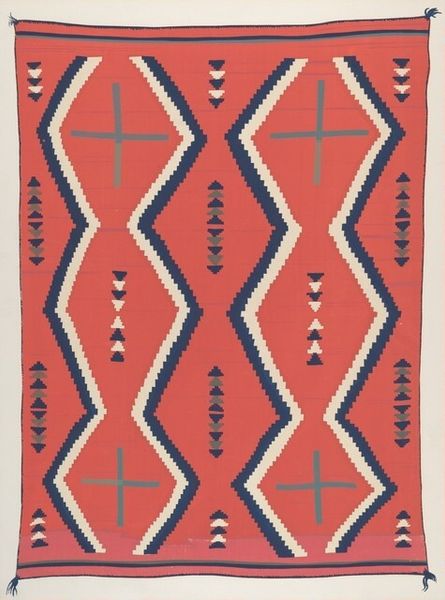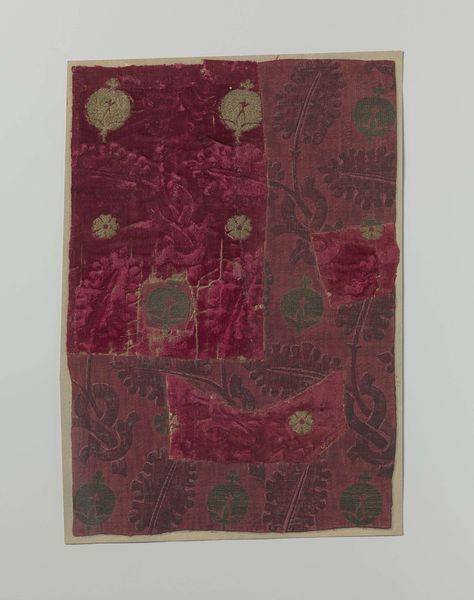
drawing, watercolor
#
photo of handprinted image
#
drawing
#
pastel soft colours
#
feminine design
#
white palette
#
collage layering style
#
fashion and textile design
#
feminine colour palette
#
watercolor
#
united-states
#
watercolour bleed
#
soft colour palette
#
watercolor
Dimensions: 11 3/4 × 9 in. (29.85 × 22.86 cm) (sheet)
Copyright: Public Domain
Curator: Here we have “No. 3,” a watercolor and drawing created around 1901 by an anonymous artist. It’s held here at the Minneapolis Institute of Art. Editor: I’m struck by the bold geometry—those fierce zigzags against that raw, earthy brown. It’s got a potent visual punch. It looks like an experiment in patterns and repetition. Curator: Indeed. The notation along the top edge actually reads “Navajo Squaw-dress (Bayetta).” It looks as though the artist rendered the design for a textile that would have been worn by Navajo women. We should address how its origins reflect material culture as both artifact and trade good. Editor: So, this wasn't just a pretty picture; it’s about cultural transmission and value, the economic forces shaping Indigenous art forms. Fascinating. Curator: Precisely. The term “bayetta” itself refers to a type of woven cloth, typically woolen, often dyed with vibrant colors. The trade of bayetta cloth had a considerable impact on Navajo textile production, as Indigenous weavers started to incorporate these new materials and dyes into their existing weaving techniques. It also transformed their relationship to local marketplaces and the dominant culture’s expectations for what Indigenous material production meant. Editor: It does invite contemplation on how external materials and markets reshape indigenous artistic expression, eh? Like, how does access to bayetta impact established techniques or patterns? The tension between tradition and innovation feels incredibly present here. And seeing the artist’s hand, literally the drawing materials… watercolor is very immediate. The work itself, as a document of cultural and artistic exchange. Curator: Exactly, the use of watercolors provides a sense of immediacy and vulnerability. It serves as a powerful testament to cultural exchange, adaptation, and the ongoing negotiations that inform artistic practice. Its minimalism echoes an intention for craft. Editor: Makes you wonder who this artist was, doesn't it? What stories were swirling as they translated textile into pigment on paper? To sit here and imagine is almost painful. Curator: Yes, reflecting on their lost perspective is evocative in its own way. But seeing how their act continues, inspires, resonates today feels vital, too. Editor: So true. It pushes us to actively look beyond surfaces, beyond aesthetic choices, and dive headfirst into the complicated relationships and materials that underpin it all.
Comments
No comments
Be the first to comment and join the conversation on the ultimate creative platform.

